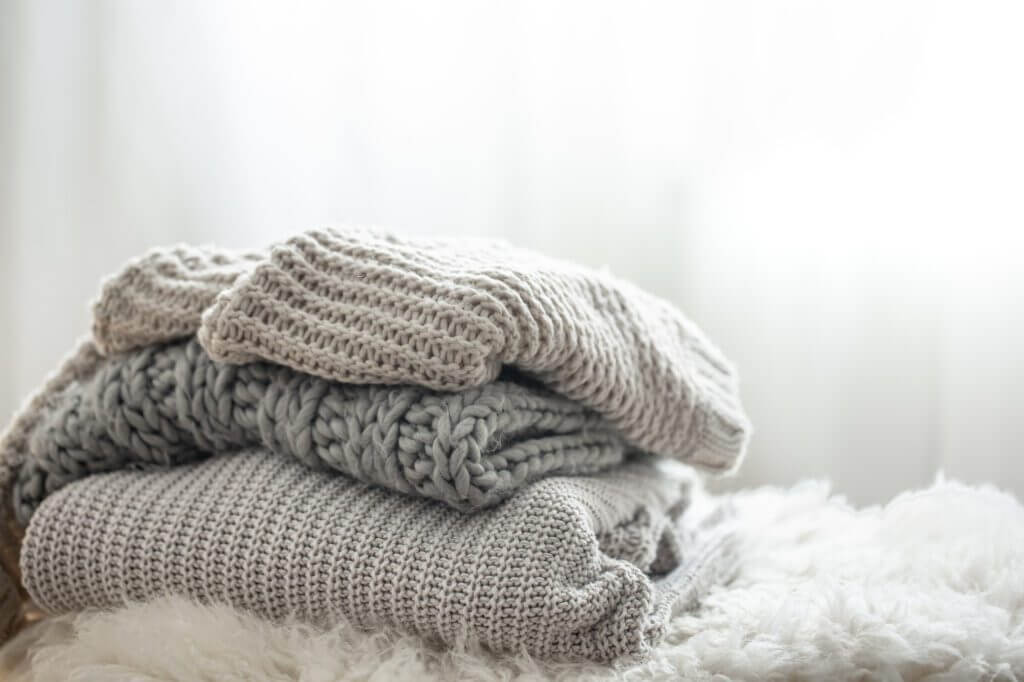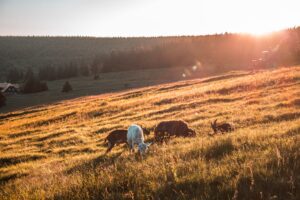Cashmere is a luxury fabric, one of the most sought-after in the world. The fabric is softer, lighter, and far more insulating than other textile materials like sheep wool, viscose, etc. But this fine material comes at a cost. Sometimes that is about $500 a luxury cashmere piece! But the environmental cost can be more concerning. There are questions you would need to ask yourself before buying cashmere products, and it is equally important to understand the potential impact their production has on the planet.
What is Cashmere? What makes it so expensive?
Cashmere is a type of wool made from the hair of certain breeds of goats – cashmere goats and pashmina goats. Cashmere goats are native to the Gobi Desert and typically found in the regions of Central Asia. The cashmere material is popular for being one of the softest fibres in the world. A typical application is the cashmere sweater.

The material is light and can be woven into luxurious and long-lasting fabrics. All these factors contribute to the fabric’s expensive pricing in the market, but they are not the main reason for its priceyness.
Cashmere is expensive because it has a very limited supply. This is due to the small amount one goat produces. It takes about four goats to make a single cashmere sweater. The farmers collect the fibres only once a year. The farmers strip the fibres of grease, dirt, and thicker hair. Consequently, the usable portion becomes only half of the original weight. Once the farmers obtain the pure cashmere, the processing phase takes a tedious amount of work. Cashmere makes up only 0.5% of the world’s total wool production. Take all these factors, and combine them with high market demand, and you would have an expensive commodity.
Understanding the history of Cashmere
Since the 1700s, cashmere has been one of the world’s finest natural fibres. It originates from Mongolian mountain goats whose fleeces were thick and warm enough to protect and insulate them from the harsh cold of winter in those regions.
Every spring, herdsmen would gently and skillfully brush and shear the under fleece from each of their mountain goats. This process did not harm these goats in any way. When the shearing is done, the wool is sorted so that only the purest quality is selected, cleaned and spun.
People called the fabric “The Fibre of Kings” in those days. It was available in flamboyant variants of colour, hue and design, used for any occasion and to complement any outfit. Its trade started in the Middle East. Then arrived at the courts of Europe and beyond. The luxurious fabric then became popular across the European continent, particularly in France. In the 19th century, its production had become a major industry in Europe, and its trade provided economic benefits for multiple geographical regions in the continent.
Today, local goat herders in Central Asia still benefit from the cashmere trade, and the ultra-soft fibre remains in high demand worldwide.
What is Cashmere today?
Today, China is the main centre for cashmere wool production worldwide, and it seems they will be for a considerable amount of time, but there is still a significant supply of the soft fabric from other Central Asian nations. While there are many ethical textile manufacturers, there are still many unethical cashmere producers today.
Animal fibres like wool have significantly gone down in market value largely due to animal rights concerns, and as a result, synthetic alternatives started to thrive commercially. But the problem facing cashmere wool is that no suitable synthetic alternative has been found to date. For decades, textile companies expected that the market would shift completely to synthetic fabrics, but instead, the opposite has happened.
The world is gradually adopting fair trade and sustainable textile manufacturing. Several international organizations have started encouraging organic, cruelty-free manufacturing processes. These recent developments deeply affect cashmere wool production as a trade, but nothing compares to the fine quality of the fabric. It will continue to have a lasting impact on textile commerce for several more decades. People will continue to pay for the product as long as it is on the market.
Understanding the production process
The production and manufacturing process of cashmere wool is complicated, and the nomadic herdsmen and women have been doing it for thousands of years. Today’s commercial production follows a very similar process too. The process is broken down into several stages;
- Combing – The goats naturally shed their coats during the moulting season. The cashmere farmers gather the shed coats.
- Shearing – The farmers can also shear the coats off the goat’s skin, but it will result in a coarser overcoat requiring more de-hairing.
- Cleaning – Production workers pick and strip the raw cashmere of dirt and impurities.
- Spinning – The cleaned pure cashmere is fed into a spinning machine. The machine twists the wool fibres to form yarn.
- Recleaning and dyeing – The workers clean the yarn again and apply dye (if applicable). In some cases, textile manufacturers prefer to garment-dye their cashmere items.
- Weaving – Textile factories weave the finished yarn into textile products such as scarves, vests, or sweaters.
- Final treatments – The factories treat the finished products with flame retardants or other final treatments before they leave the facility.
- Packaging – Textile vendors package the final products and make them ready for sale.
What are the uses for Cashmere fabrics?
Even though cashmere wool is more expensive than other types of wool, it is much finer and softer, which makes its wearer feel a nice sense of warmth, comfort and luxury. The fabric is used in a variety of applications such as;
- Clothing: Cashmere has good insulating properties. Textile manufacturers use it for making cold-weather clothing such as cardigans or pullovers, crewneck or v-neck sweaters, coats, pants, and other items.
- Accessories: They also make useful accessories such as shawls, gloves, socks, and scarves.
- Home goods: Blankets are another application of cashmere fabrics.
What are the impacts of Cashmere fabrics on the environment? Some considerations
How Cashmere got so cheap?
Cashmere used to be a lot more expensive than it is today. Due to higher demands, the textile industry has been forced to start manufacturing all kinds of garments at a speedy rate to make up for lower market prices. But the people, animals, and environments harmed in the process bear the true cost of this kind of production.
As more people demand more cashmere products, the industry is trying to ramp up its pace to meet the demand. This has led to far lower product quality and, even worse, poor welfare standards for the goats. All these contribute to the drastic reduction of the cost of the fabric.
Is Cashmere wool production cruel to animals?
Cashmere is a fine fibre obtained from cashmere goats and a few similar breeds. The farmers collect this fibre using a metal comb with sharp teeth. The combing process is usually painful and prolonged if the goat is not naturally moulting. This can result in bruising and injuries to the poor animals.
Increased awareness of animal welfare issues in the industry has resulted in limiting cashmere commerce or, in some places, outright bans.
The main concerns with cashmere production are tied to the collection process of the fibre. Because of these issues, Australian farmers no longer perform collection through combing. The major concerns associated with cashmere production include the following:
- Sometimes, during the combing process, the farmers tie all four legs of the goat, rendering it immobilised and likely to cause increased fear and stress in them.
- If a goat is not moulting, the combing process can be painful. The comb also has sharp teeth, which can lead to bruises and injuries on the goat’s skin.
- The prolonged duration of combing causes protracted pain and stress during and after the procedure.
- Poor handling during shearing can lead to skin injuries.
- Generally, the farmers only shear their goats during winter or early spring when weather conditions are very cold and windy. Without adequate farm management, these animals would be vulnerable to the risk of hypothermia after they are shorn.
- The environment in which these goats are kept is often poorly maintained, leaving them vulnerable to contagious diseases.
- Young goats with perceived defects in their coats are usually slaughtered.
While this industry is associated with many animal welfare concerns, studies assessing and addressing these concerns are severely lacking. The world is gradually becoming more aware of animal welfare, but these issues still need more research, further investigations and better solutions.
Is there any direct impact on humans and lands?
Research has shown that jobs involving the slaughtering or maltreatment of animals can lead to severe negative mental health outcomes.
Reports have also shown that the rising demand for cashmere is tied to a cashmere-debt cycle, and those working in the industry feel the urgent need to meet up with the demand. This leads to an unnaturally high concentration of goats in certain areas, leading to environmental issues such as overgrazing, causing the grasslands in those areas to suffer. For this reason, cashmere production has been directly linked to rising climatic temperatures, land degradation, and even species endangerment.


